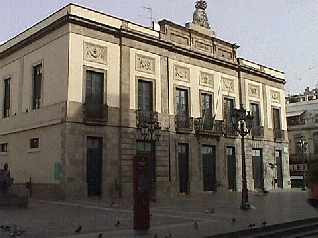
 |
|
 Forums |
 Gallery |
 Links/Reviews |
 Airport Transfers |
 Other Travel Services |
 Contact Us |
|
TRAVEL GUIDE
|
Adeje WeatherHistory of Tenerife Of the 7 larger islands (and 6 smaller islands) that make up the Canaries, Tenerife is the largest, some 795 square miles in size. As with all the islands, Tenerife is volcanic in origin and around 12 million years old. The last eruption on Tenerife was in Chinyero (6 miles north west of the peak of Mt, Teide) in 1909. Mount Teide is today, the third largest volcano on earth and the highest point of Spain, over 12,000 feet (3,715 meters) in height. As with all the islands, the Guanches were the original inhabitants, tall and fair-haired people possibly originating from the north west of Africa or from the Vikings, or a combination of the two? The Guanches relied on limited farming, herding, hunting and gathering, and the majority of them lived in caves. Their way of life was very basic - almost 'stoneage' - and the tools which they used were primitive. Wheels were unknown to them. The clay pots which they used were moulded by hand. The Guanches had split the island into 9 different kingdoms It wasn't until the late 1200s that the Europeans started paying much interest in the islands and in Tenerife in particular and finally, in 1341 Europeans started to settle on the island as a Portuguese-Italian mission was established. The French were the first to actually invade the island in 1402 and by 1495, the Guanches hold on the island had gone as many were sold off into slavery, their language vanishing and those that were left had married and started families with the Spanish invaders. Tenerife was in fact the last of the islands to fall to the Spanish conquests. Spain continued to hold onto the islands through the 16th, 17th and 18th centuries in spite of attacks by Moroccan, the Dutch and several attacks by the British. The most famous of the British attacks was one led by Nelson in 1797, a battle in which he lost his arm! In 1821 the islands were officially declared part of Spain and have remained so ever since. From 1812 until 1927, Santa Cruz de Tenerife was the capital of the islands. Today the islands are split into two provinces, to the east Gran Canaria, Lanzarote and Fuerteventura are one province with Las Palmas de Gran Canaria as the capital and to the west, Teneife, La Gomera, La Palma and El Hierro are the other province with Santa Cruz de Tenerife as the capital.
The islands flourished under Spain's rule thanks to the exportation of produce but the two world wars and Spain's civil war took their toll on the islands and the poeple. In the 1950s around 16,000 fled to south America. In the early 60s Franco agreed to allow tourism on the islands. Tenerife and Gran Canaria the first and fastest to benefit, followed by Lanzarote, then Tenerife and on a smaller and slower scale, the other islands are following. 75% of all business on the island relies on tourism. Other income is made from farming, mainly agricultural - fruit and vegetables and in particular banana plantations and vineyards. In the northern parts of the island the landscape is very different from the southern nature. The clouds and trade winds arriving from north don't always have the strength to clear the mountain but pour their rain north of the mountain. Due to these showers the flora is unbelievably rich and breathtakingly beautiful. That is why Puerto de la Cruz is often called the City of Eternal Spring. The south of the island is more arid and receives an average of just 6 inches rain a year, officially making it a desert.
If you wanted a better look into the history of Tenerife, my suggestion is go there, go to La Laguna and go to the island's national history museum. |
|